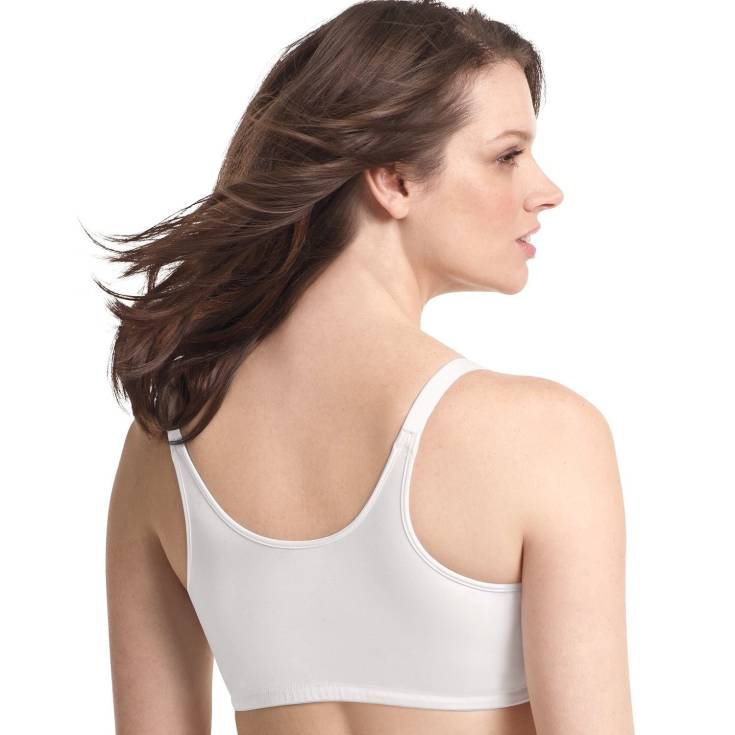Imagine feeling tightness in your hips after sitting for prolonged periods at work. Simple tasks like bending to tie your shoes become challenging.
By incorporating targeted hip mobility exercises into your routine, you can improve your range of motion and alleviate discomfort. These exercises not only enhance flexibility but also contribute to better posture and overall movement quality.
Understanding the importance of hip mobility is the first step towards a healthier and more functional body.
Benefits of Hip Mobility Exercises
Improving hip mobility through targeted exercises can enhance overall flexibility and reduce the risk of injury. The hip joint is crucial for various movements in daily activities and exercise routines. By incorporating specific exercises that focus on hip mobility, you can increase the range of motion in this joint, leading to improved performance and decreased likelihood of strains or sprains.
Engaging in hip mobility exercises helps to strengthen the surrounding muscles and ligaments, providing better support for the hip joint. This added stability can contribute to better balance and posture, reducing the risk of falls or other injuries, especially as you age. Additionally, increased hip mobility can positively impact adjacent joints like the knees and lower back, as proper alignment and movement patterns are essential for overall musculoskeletal health.
Regularly including hip mobility exercises in your fitness regimen can also enhance athletic performance by allowing for more fluid and efficient movements. Whether you're an athlete looking to improve agility and speed or simply aiming to move more comfortably in your daily life, prioritizing hip mobility can bring numerous benefits to your overall well-being.
Importance of Hip Flexibility
Improving your hip flexibility is crucial for enhancing your overall mobility and functional movement patterns. By incorporating hip mobility exercises into your routine, you can significantly increase your range of motion, leading to improved athletic performance and reduced risk of injuries.
These exercises serve as effective injury prevention techniques, helping you maintain healthy hips and promoting long-term joint health.
Hip Mobility Benefits
Enhancing hip mobility through flexibility exercises is crucial for maintaining overall joint health and function. Having good hip flexibility can help prevent injuries, improve posture, and enhance athletic performance.
Flexible hip muscles and joints allow for a greater range of motion, which is essential for daily activities like walking, bending, and reaching. Additionally, hip mobility impacts the surrounding areas such as the lower back and knees, making it important for overall body mechanics.
Research suggests that maintaining hip flexibility may also reduce the risk of developing conditions like hip impingement or lower back pain. By incorporating hip mobility exercises into your routine, you can experience improved movement patterns and better overall quality of life.
Improving Range of Motion
To optimize your hip range of motion, prioritize incorporating hip flexibility exercises into your routine. Hip flexibility plays a crucial role in various daily activities and athletic performances. By improving hip flexibility, you can enhance your overall mobility, reduce the risk of injuries, and enhance athletic performance.
Tight hip flexors can lead to poor posture, lower back pain, and decreased range of motion. Incorporating exercises like hip flexor stretches, leg swings, and hip circles can help increase flexibility and mobility in the hip joint. Consistent practice of these exercises can lead to improved hip function, allowing you to move more efficiently and effectively in your daily life and physical activities.
Injury Prevention Techniques
Prioritize incorporating hip flexibility exercises to prevent injuries and enhance athletic performance by maintaining optimal hip range of motion.
Adequate hip flexibility is crucial for various activities, including running, jumping, and weightlifting. Limited hip mobility can lead to compensations in movement patterns, increasing the risk of injuries such as strains, sprains, and even stress fractures.
By regularly engaging in hip mobility exercises, you can improve the flexibility of the hip flexors, adductors, abductors, and rotators, ensuring that your hips move freely and efficiently through their full range of motion.
This not only reduces the likelihood of hip-related injuries but also enhances your overall athletic performance by allowing you to generate more power and move with greater ease and efficiency.
Key Muscles for Hip Mobility
Understanding the key muscles involved in hip mobility is essential for optimizing your flexibility and range of motion. The hip joint is supported by a complex network of muscles that work together to allow for smooth and efficient movement. The primary muscles responsible for hip mobility include the hip flexors, gluteal muscles, adductors, abductors, and deep external rotators.
The hip flexors, such as the iliopsoas and rectus femoris, play a crucial role in flexing the hip joint, allowing you to lift your knees towards your chest. The gluteal muscles, particularly the gluteus maximus, medius, and minimus, are responsible for hip extension, abduction, and rotation. The adductors, located on the inner thigh, help bring the legs together, while the abductors, such as the gluteus medius and minimus, move the legs away from the midline. Additionally, the deep external rotators, including the piriformis and gemellus muscles, aid in hip rotation.
Common Hip Mobility Issues
Do you find yourself struggling with stiffness in your hips?
This can be caused by a variety of factors such as a sedentary lifestyle, muscle imbalances, or even injuries.
Causes of Stiff Hips
While many factors can contribute to stiff hips, one of the most common causes is prolonged sitting or inactivity. When you spend extended periods sitting, the hip flexors remain in a shortened position, leading to tightness and reduced range of motion.
Muscle imbalances from activities like excessive running or cycling can also contribute to hip stiffness. Additionally, age-related changes in joint structures and tissues can lead to decreased flexibility in the hips.
Poor posture and inadequate warm-up before physical activities may further exacerbate hip mobility issues. Understanding these common causes of stiff hips is crucial in addressing and preventing discomfort and restricted movement in the hip region.
Solutions for Flexibility
To improve flexibility and address common hip mobility issues, incorporating specific hip mobility exercises into your routine can be highly beneficial.
Tight hip flexors are a common problem that can lead to discomfort and limited range of motion. To counter this, exercises like hip flexor stretches, leg swings, and hip circles can help loosen these muscles.
Additionally, weak glutes can contribute to hip mobility issues. Including exercises such as glute bridges, clamshells, and lateral band walks can strengthen the glute muscles, improving overall hip function.
Remember to perform these exercises with proper form and gradually increase intensity to prevent injury and maximize benefits. Consistency is key, so aim to incorporate these exercises into your routine regularly for improved hip flexibility and mobility.
Dynamic Hip Mobility Drills
Improving hip mobility is essential for overall flexibility and function, and incorporating dynamic hip mobility drills into your routine can be highly beneficial. Dynamic drills involve active movements that take your joints through a full range of motion, helping to improve flexibility, strength, and stability in the hips. These drills can also enhance athletic performance and reduce the risk of injuries by preparing your body for dynamic movements.
Dynamic hip mobility drills may include exercises like leg swings, hip circles, high knees, and lunges with a twist. Leg swings, for example, help to increase the range of motion in your hip flexors and hamstrings. Hip circles are effective for lubricating the hip joint and improving overall mobility. High knees and lunges with a twist engage the hip muscles while also promoting balance and coordination.
Incorporating dynamic hip mobility drills into your warm-up routine can help activate the muscles around your hips, improve blood flow, and prepare your body for more intense physical activity. Remember to perform these drills in a controlled manner, focusing on proper form and alignment to maximize their benefits.
Static Hip Stretches
Incorporate static hip stretches into your routine to enhance hip flexibility and maintain muscle health. Static hip stretches involve holding a specific position to stretch the muscles around the hip joint. These stretches help improve flexibility, increase range of motion, and reduce the risk of injuries related to tight hip muscles.
One effective static hip stretch is the hip flexor stretch, where you kneel on one knee and lunge forward, feeling a stretch in the front of your hip. Hold this position for about 30 seconds on each side.
Another beneficial static stretch is the piriformis stretch, which targets the piriformis muscle located deep in the buttocks. Sit on the floor with one leg crossed over the other, then gently pull the knee towards the opposite shoulder until you feel a stretch. Hold for 30 seconds and switch sides.
Incorporating these static hip stretches into your routine, especially after a workout or as part of a daily stretching regimen, can help improve hip mobility and overall muscle health.
Hip Mobility Exercises for Athletes
Enhance your athletic performance through targeted hip mobility exercises aimed at optimizing your range of motion and muscle function. As an athlete, your hip mobility plays a crucial role in your overall performance and injury prevention. Incorporating specific exercises into your routine can help you move more efficiently and powerfully.
Focus on dynamic stretches like leg swings, hip circles, and high knees to warm up your hip joints before engaging in intense physical activity. These movements help increase blood flow to the muscles and improve flexibility. Additionally, exercises such as lateral band walks, hip flexor stretches, and hip bridges can enhance your hip strength and stability, essential for explosive movements and agility on the field or court.
Including hip mobility exercises in your training regimen not only boosts your athletic performance but also reduces the risk of hip-related injuries. Consistent practice of these exercises can lead to improved coordination, balance, and overall athletic capabilities. Make hip mobility a priority in your workouts to unleash your full potential as an athlete.
Progression in Hip Mobility Training
To advance your hip mobility training effectively, consider implementing progressive exercises that challenge and expand your range of motion. Progressive training involves gradually increasing the difficulty or intensity of your exercises over time. This approach helps prevent plateaus and ensures continuous improvement in your hip mobility.
Start by incorporating dynamic stretches like leg swings, hip circles, and lunges into your routine. These movements help warm up your muscles and prepare them for more challenging exercises. As you progress, try adding resistance bands to traditional hip stretches to increase the intensity and deepen the stretch.
Furthermore, focus on strengthening the muscles around the hip joint to support and stabilize it. Exercises like clamshells, hip bridges, and lateral band walks target the hip abductors and external rotators, enhancing overall hip function.
Remember to listen to your body and progress at a pace that's comfortable for you. Gradually increasing the difficulty of your hip mobility exercises will lead to noticeable improvements in your range of motion and overall hip health.
Conclusion
In conclusion, incorporating hip mobility exercises into your routine can greatly improve your overall performance, reduce risk of injury, and enhance your range of motion.
By focusing on key muscles, addressing common issues, and progressing in your training, you can optimize your hip flexibility and function.
Remember to consistently incorporate dynamic drills and static stretches to maintain and improve hip mobility for better athletic performance and overall well-being.


